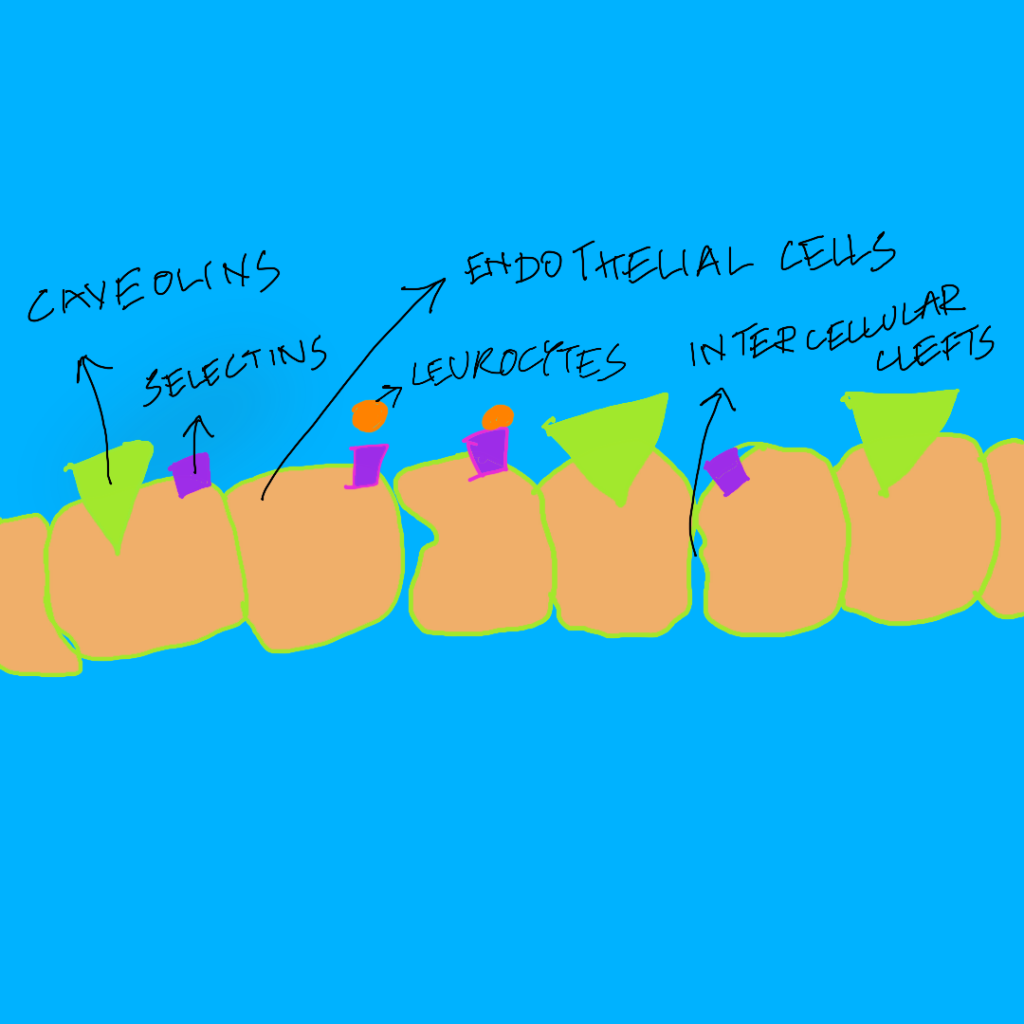Endothelium is the inner lining of blood vessels, lymph vessels and the heart. Derived from mesoderm, it comprises of a single layer of simple squamous cells. The endothelium makes a semi-permeable interface or barrier.
Structure
Endothelial cells are held together by tight junctions but can also have intercellular clefts between them. They embed many proteins, like caveolins and adhesion molecules, in their membranes.

Functions
- Transport of substances between the blood and interstitium
- Maintaining vascular tone
- Inflammation
- Haemostasis
Transport of substances
The endothelium helps transport glucose and amino acids. Glucose is transported through glucose transporters (GLUTs), mainly GLUT 1. Amino acids are transported through y+ cationic amino acid transporters, the expression of which is influenced by TNF-alpha. Besides the specific transporters, the tight junctions also allow passage of various substances like ions, water molecules and even cancer cells. The tight junctions though at times can act like a ‘fence’, blocking transport.
Maintaining vascular tone
A variety of substances are produced by the endothelium, many of which are vasodilators and vasoconstrictors. The interaction between vasodilators and vasoconstrictors decides the tone of the blood vessels. Nitrous oxide and PGI2 are the main vasodilators, while endothelin and thromboxane A2 the main vasoconstrictors.
Inflammation
Inflammation is an immediate immune response, and endothelium plays an important role in it. It releases many vasodilators which causes the blood to flow a bit slowly, called stasis. Following it, the permeability of the endothelium increases; so the leukocytes can adhere and pass through the endothelium easily.
Haemostasis
During normal states, the blood needs to be free-flowing and hence must be fluid. To keep the blood fluid, the endothelium has certain mechanisms to prevent coagulation. It activates tissue factor pathway inhibitor, antithrombin 3 and thrombomodulin. In the instance of bleeding, the tissue factor pathway inhibitor is inactivated.
Role of endothelium in diseases
Endothelial dysfunction is an integral link in many conditions like atherosclerosis, diabetes, hypertension, cancers and COVID-19. The particular receptor implicated in COVID-19 is ACE2 receptor.
Testing endothelial function
Endothelial function assessment, although usually not done, can be carried out by invasively by infusing coronary vessels with vasoactive substances or in a non-invasive manner, by high resolution ultrasound.
Leave a comment